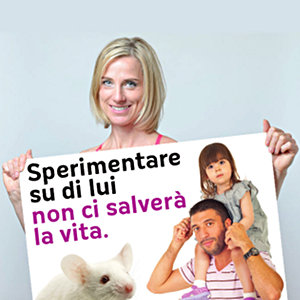caro attilio,
rispondo solo a due delle tante str0nzate che hai scritto, accecato da chi in questa città bonta sua non ci vive, e vede il calcio con gli occhi del tifoso che tifa una squadra, perché vince.
Agnelli (al quale Torino deve tutto)
torino ad agnelli deve:
- un'economia in crisi nera che non ha mai avuto da oltre 50 anni uno sbocco che non fosse l'automotive
- una smisurata immigrazione che ha sconvolto
l'urbanistica di questa città, otlre che la sua cultura
- una dirigenza politica sottomessa alla regole di mirafiori
- una città a misura d'auto, e non a misura d'uomo
- una piccola cerchia di un centinaio di superprotetti che possono andare in giro per la città padroni di essa e nessuno gli può dire niente
queste e tante altre sono le cose che torino deve ad agnelli, perché per il resto, questa città di buono in cambio dalla MAFIAT non ha mai avuto nulla, e se non ci credi, muovi il culo e fatti un giro a vedere l'immensa degredazione che la fiat ha regalato a una città che di suo aveva il rigoro tipico della mitteleuropa
, se Torino è
conosciuta in tutto il mondo è sicuramente per la Juventus e per la Fiat, non per il Torino.
scusate il lungo copy&paste, ma volevo solo mostrarti un articolo del LA Times, su torino, uscito un paio di mesi fa, racconta alla gente la città, cosa è, cosa è stata, ecco cosa sanno di noi all'estero. leggilo (se sai l'inglese) e ti prego, un'altra volta prima di parlare
del Toro, pulisciti la bocca, è meglio...
TURIN, Italy — It is nearly 56 years now. Still they come, pilgrims from across Italy, Italians from around the world. Here, at the wall behind the church on the high hill, one of life's truths is made plain: Death can claim even the greatest of champions, but the heart and soul of a people can carry on.
In May 1949, an airplane carrying the Torino Calcio team, arguably the best soccer squad in the world, crashed in heavy fog into the back of the Superga Basilica. All 31 people on board perished — 18 of them soccer players.
They had won four straight Italian championships and filled much of the roster of the Italian national team. After the years of Mussolini and fascism, after the humiliation of World War II, these men had shown the world what Italians could do.
The loss of that team is a defining memory of this region — one that infuses preparations for the 2006 Winter Olympics, which open here one year from today.
"The past here is present," said Claudio Sala, a Torino star in the 1970s who still lives in the area.
"Being a Torinese, having the Olympics at home is a very emotional thing," said Nadia Cortassa, who finished fifth in the women's triathlon at the 2004 Summer Games in Athens. "It is a very big opportunity."
A number of logistical and financial issues remain for Turin 2006 organizers and the Italian government, including transportation to the mountain venues and a shortage of hotel rooms. For months, the organizing committee has been confronting a revenue shortfall of about $200 million; at a meeting earlier this week in Rome, the government agreed to cover it. A number of Olympic-related sites remain under construction but appear all but certain to be completed on target, Olympic officials said.
Most important, several officials said, the organizing committee appears to be operating with urgency and decisiveness. Most credit the change to the oversight of Mario Pescante, a veteran IOC member and Italian government undersecretary, and Luciano Barra, an experienced Italian sports official, who were brought on board late last year.
"Even the logistics can be solved," Barra said Wednesday. "Decisions must be taken with courage."
The developments have buoyed preparations with a renewed sense of optimism as the International Olympic Committee's ruling executive board gathers here today for a series of "one year to go" events.
"The 2006 Games is the chance not only for Turin to shine but for the whole of Italy to shine, to showcase to the world what it can offer," IOC President Jacques Rogge
said.
In Italy, and in Italian communities around the world, the tale of Torino Calcio binds the generations — even if one roots for the city's other soccer team, juventus, or one
of the dozens based elsewhere across Italy.
To many, the Torino team of the mid- to late-1940s remains il grande Torino.
"We lost an expression of our excellence," former New
York Gov. Mario Cuomo said.
"A traumatic wound," said Luigi Ballerini, a poet and author who teaches modern and contemporary Italian literature at UCLA.
In Italy, soccer rules the sports scene. Torino and juventus are among the sport's leading sources of
tradition — juventus in black and white stripes, Torino in a distinctive blood-red jersey called granata.
Valentino Castellani, who now heads the Turin 2006 Olympic organizing committee, grew up a Torino fan in Varmo, a small village in northeastern Italy, where he had turned 9 in 1949.
"We would go around in the village writing on the walls, 'Viva Toro' ['Go Torino'] and 'Abbasso juve' ['Down
With juventus']," he recalled.
Enzo Viscusi, a senior executive with the Italian energy conglomerate ENI, grew up a juentus fan in southern Italy. Nonetheless, he said of the Torino team, "I can still name all the players…. It was Italy's pride."
In the 1930s, juventus dominated Italian soccer. At the end of 1941, however, Torino adopted an alignment in which the 11 players on the field lined up as three forwards, two attacking midfielders, two defensive midfielders, three defenders and a goalkeeper.
This "innovative and rational system of play" struck a balance between the "individual virtuosity" of stars such as team captain Valentino Mazzola and "collective cohesion," France-based author Paul Dietschy wrote last year in the scholarly journal Soccer and Society.
It also "echoed the modernization of an economy in Turin that had Fiat as its forefront," he added, referring to
the automotive giant that has long served as the city's economic base.
"After the war, after all the suffering and destruction,
it was a symbol of a renaissance of Italy," echoed Ugo Colombino, an economics professor at the University of Turin.
Torino won the Italian national club championship in 1943 and again in 1946, 1947 and 1948, with no formal championship held in 1944 and 1945 because of the war.
Beppe Nizza, 73, recalled that he often rode his bicycle from his home in Canale to the nearby town where Torino trained.
"There was a player, Eusebio Castigliano. He used to see
me and smile," said Nizza, who still lives in Canale. "He could throw a coin and back kick it with the heel of his shoe over his head and into his pocket."
On May 3, 1949, Torino played a charity match in Lisbon, Portugal.
Returning home the next day in dense fog, the team's propeller-driven plane crashed shortly after 5 p.m. into the back wall of the basilica, high on the ridge of the hills east of town. The cause remains unclear.
Thousands trooped to the crash site, which holds the tombs of Italian royalty, the Savoys, who had made Turin their base since the 15th century.
Local lore has it that the plane almost cleared the hill.
"If they were 10 meters higher, they would have passed," Castellani said. "
But they didn't. That was their destiny."
More than 500,000 people turned out for the funeral, according to newspaper accounts.

 Vegan Home
Vegan Home


